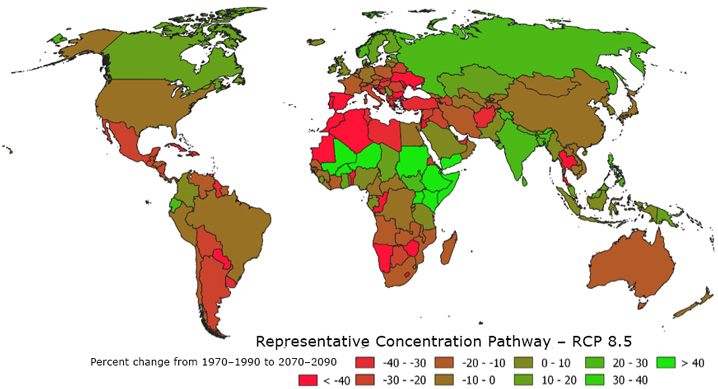Projections of future total renewable water resources (TWR) by country for different climate change scenarios available
Water resources availability may ultimately limit the potential of countries for expanding their activities. Estimates of future changes in water supply as a result of climate change are therefore of critical importance for the design and implementation of medium/ long-term development strategies. Water that is available within a country does not only consist of the water that is generated internally but also of water that flows into that country through rivers and streams, net of committed outflows. Both internal and inflowing water resources are likely to be affected by changes in precipitation and temperature as a result of changing climate conditions. Therefore, they have to be assessed in a spatially explicit way.
The FAO Global Perspectives Studies (GPS) Team has combined data from various hydrological models that simulate water availability at the pixel level and generated projections at the country level. These projections are consistent with FAO AQUASTAT for current conditions.
The dataset was created by calculating relative changes in internal and inflowing water resources by country, resulting from different climate change scenarios. Relative changes were used to re-scale reported values in FAO AQUASTAT. The pixel-based data from six hydrological models considered in the ISI-MIP project, driven by 5 climate models was routed through a river network (Fekete et al., 2001) at a spatial resolution of 30 arc minutes (around 50 km at the equator). Following the AQUASTAT methodology, river flows that cannot be exploited due to treaties were assumed not to change in the future.


